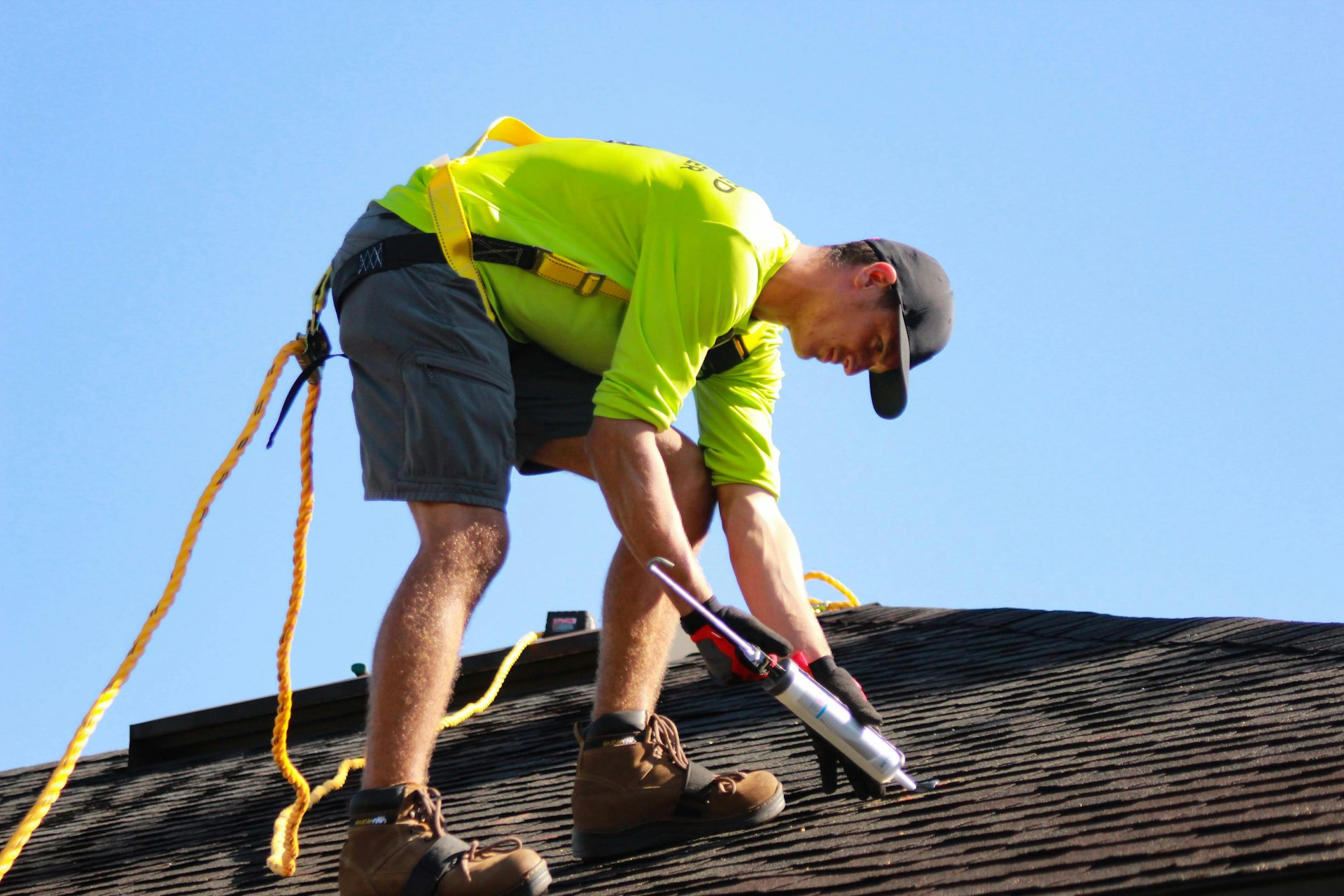PROPERTYSPARK ARTICLE
Why Timely Storm Repair is Key to Maintaining Structural Integrity in Buildings
Storms can have a devastating impact on buildings, causing significant damage that compromises their structural integrity. Timely repairs are crucial for preventing further deterioration and ensuring the safety of occupants.
We’ll explore the risks of delayed storm repairs, the importance of regular maintenance, factors influencing repair costs and timelines, and how weather impacts building structures.

The Risks of Delayed Storm Repairs
Postponing storm repairs can lead to a host of problems that threaten the structural integrity of your building. Here are some of the key risks associated with delayed repairs:
Water Damage and Mold Growth
When storm damage allows water to penetrate your building, it can quickly lead to extensive water damage and mold growth. Moisture can seep into walls, floors, and ceilings, causing materials to deteriorate and weaken over time. Mold growth not only compromises the structural integrity of your building but also poses serious health risks to occupants.
Weakened Structural Components
Storm damage can weaken critical structural components such as roofs, walls, and foundations. Delaying repairs allows these weakened areas to continue deteriorating, potentially leading to partial or complete structural failure. This puts the entire building and its occupants at risk.
Increased Repair Costs Over Time
The longer you wait to address storm damage, the more extensive and costly the repairs become. Minor issues that could have been fixed quickly and affordably can escalate into major problems requiring significant restoration work. Acting promptly helps minimize repair costs and prevents further damage.
Potential Safety Hazards
Delayed storm repairs can create safety hazards for building occupants. Weakened structures, unstable roofs, and compromised electrical systems can all pose serious risks. By addressing damage promptly, you help ensure the safety of those who live or work in the building.
For storm damage, it’s essential to work with experienced professionals who can assess the extent of the damage and provide efficient, effective repairs. Companies like Gula Construction specialize in wind storm repair and can help you restore your building’s structural integrity quickly and safely.
The Importance of Regular Building Maintenance
Regular building maintenance is crucial in minimizing the impact of storms and avoiding expensive repairs. Here’s why:
Identifying and Addressing Minor Issues
During routine maintenance, minor issues can be identified and addressed before they escalate into major problems. This proactive approach helps prevent small leaks, cracks, or other vulnerabilities from turning into significant damage during a storm.
Preventive Measures to Minimize Storm Damage
Regular maintenance allows you to implement preventive measures that help minimize storm damage. This may include reinforcing roofs, sealing gaps and cracks, and ensuring proper drainage around the building. By taking these steps, you can reduce the likelihood of extensive damage during severe weather events.
Maintaining Proper Drainage and Waterproofing
Effective drainage and waterproofing systems are crucial for protecting your building from water damage during storms. Regular maintenance ensures that these systems remain in good working order, directing water away from the building and preventing leaks and moisture intrusion.
The Role of Professional Inspections
Professional building inspections are an essential component of regular maintenance. Trained experts can identify potential weaknesses or vulnerabilities that may not be apparent to the untrained eye. By catching these issues early, you can address them before they lead to costly storm damage.
Factors Influencing Storm Repair Costs and Timelines
Several factors can impact the cost and timeline of storm repairs:
The Extent and Type of Damage
The scope and severity of the damage will significantly influence repair costs and timelines. Minor damage, such as a few missing shingles, can be addressed quickly and affordably. However, extensive damage involving multiple building components will require more time and resources to repair.
Building Age and Construction Materials
The age of your building and the materials used in its construction can affect repair costs and timelines. Older buildings may require more extensive work to bring them up to current building codes and standards. Some construction materials may be more difficult or costly to repair than others.
Availability of Qualified Repair Professionals
The availability of qualified repair professionals in your area can impact how quickly repairs can be completed. In the aftermath of a major storm, demand for repair services may be high, leading to longer wait times. It’s important to work with reputable contractors who have the experience and resources to handle your repairs efficiently.
Insurance Coverage and Claims Process
If you have insurance coverage for storm damage, the claims process can affect repair timelines. Working with your insurance company to document damage, obtain estimates, and secure approvals can take time. It’s crucial to familiarize yourself with your policy and work closely with your insurer to expedite the process.
Weather’s Impact on Building Structures
Weather can have a significant impact on building structures, causing various types of damage that require prompt attention.
Common Types of Storm Damage
Wind Damage
High winds can cause damage to roofs, siding, and windows. Shingles may be torn off, siding can be dented or detached, and windows can be broken by flying debris.
Hail Damage
Hail can cause dents, cracks, and holes in roofs, siding, and windows. The severity of the damage depends on the size of the hailstones and the duration of the storm.
Flood Damage
Heavy rains and rising water levels can lead to flooding, which can cause extensive damage to a building’s foundation, walls, and floors. Floodwater can also lead to mold growth and structural instability.
The Role of Building Codes and Standards
Building codes and standards play a crucial role in ensuring that structures are designed and constructed to withstand the impacts of severe weather. Adhering to these codes helps minimize damage and protect occupants during storms.
Adapting to Changing Weather Patterns
As weather patterns change and storms become more frequent and intense, it’s essential for building owners and managers to adapt. This may involve upgrading building components, implementing new technologies, and developing emergency response plans to minimize damage and ensure safety.
Frequently Asked Questions
How soon should I initiate repairs after a storm?
It’s best to initiate repairs as soon as possible after a storm to prevent further damage and minimize repair costs. Contact a professional storm repair company to assess the damage and develop a plan of action.
Can I perform storm repairs myself, or do I need to hire professionals?
While some minor repairs may be DIY-friendly, it’s generally best to work with experienced professionals for storm damage repairs. They have the expertise, tools, and resources to handle repairs safely and effectively.
What are the potential consequences of ignoring minor storm damage?
Ignoring minor storm damage can lead to more extensive and costly repairs down the line. Small leaks or cracks can allow water to penetrate the building, causing structural damage and mold growth.
How can I prepare my building to better withstand future storms?
Regular maintenance, including inspections and preventive measures, can help prepare your building for future storms. Consider upgrading to more resilient building materials, improving drainage systems, and developing an emergency response plan.
Are there any government assistance programs for storm repair costs?
In some cases, government assistance programs may be available to help cover the costs of storm repairs. Check with your local and state agencies to see if you qualify for any grants or low-interest loans.
Conclusion
Timely storm repair is essential for maintaining the structural integrity of your building and ensuring the safety of its occupants. By understanding the risks of delayed repairs, the importance of regular maintenance, and the factors influencing repair costs and timelines, you can make informed decisions to protect your property.
Remember, a proactive approach to storm damage repair and maintenance can save you significant time and money in the long run. Work with qualified professionals to assess damage, develop repair plans, and implement preventive measures to safeguard your building against future storms.
By prioritizing storm repair and embracing a culture of regular maintenance, you can preserve your building’s structural integrity, minimize costly repairs, and provide a safe and secure environment for those who live or work within its walls.
Learn how to Become a Top Agent with the Guaranteed 5 Min/Week System
No social media experience needed
Free webinar seat (limited quantities)
Learn the guaranteed 5 min/week system
Become a social media superstar
Constantly get new leads
Beat the competition
Get a special webinar deal
This Agent Tripled His Commissions Just With Social Media
Learn how this real estate agent tripled his commissions just with social media and how you too can become a social media superstar.
Why You Can’t Just “Boost” Your Real Estate Listing
That big blue button has tempted you before right? You want to Facebook Boost your Real Estate listing. Find out why you shouldn’t!
How Much Should Realtors Spend On Social Media
A question we get often from Realtors is “how much should I spend on social media?” Find out exactly how much to spend and how to spend it without getting ripped off!



